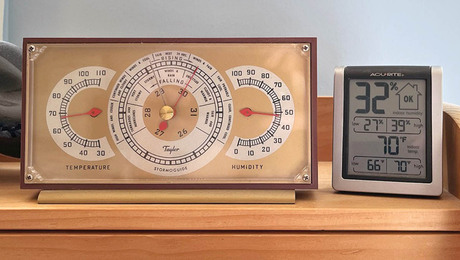Morning All,
I have a Dremel tool that I bought about a year ago and hardly used. I will be installing a bunch of Old Work electrical boxes into some freshly drywalled rooms in the basement and though to make the process of install the boxes more quicker than slower.
So, instead of using a utility knife to cut through the drywall I thought about a hand-held metal/wood template/jig and using the equivalent of a Rotozip to cut through the drywall. I find it not being within my desire to actually buy a Rotozip for finishing a basement of my own (maybe if I did this for a living, but …), so I thought about using my Dremel tool.
Does anyone know of an attachment for the Dremel I can use with a small hand-held jig to cut electrical box openings in the drywall, and what would be ‘safe’ enough to not accidentally cut into the electrical cable exterior PVC jacket?



















Replies
Dremel also makes spiral bits that cut, but their tools do not have the torque of the Rotozip which is essentially a small router. You can do it, but it will be slower. Slower isn't bad because it's not as easy as it looks. The Dremel may not be made to withstand the dust generated from DW.
Why didn't you install the boxes at the time it was "freshly drywalled"?
Because, I was convinced that the Old Work boxes were less of a PITA. I would still have had to cut openings regardless.
So, are your wires already in the walls where you want to put these boxes?
"Citius, Altius, Fortius"
Yes, and they run horizontally at the 3' level (from the floor) and drop to the bottom of prelabeled stud cavities, stapled at the 2' level (from the floor) and every 3-4' horizontal run. Drywall was pencil-marked before hanging to denote locations. I thought of using the Old Work boxes as an easier solution to installing than trying to wrestle hole-location needs in pre-hung boxes.
I figured a small wooden jig being hand-held at stud-cavity location at the 1' level (from the floor) would provide sufficient means of meeting the =<12" stapling from box code while providing sufficient cable lead to pass into box.
I missed that this was an old work boxes.For that I would make a template, you can use pasteboard or something else that is stiff. Then use it to mark the hole with a pencil.Get a DW saw. It will easly punch a hole in the wall and cut it out. You can have two holes done before you get the adapter and bit in the dremel. And much less dust.And no worry about it slipping.
OK. I thought so.
Well, i agree with Bill: Get a drywall jab saw ( used to be called a keyhole saw) and you will be done quicker and with less mess.
Luck.
"Citius, Altius, Fortius"
I've done it both ways. My dremel kit CAME with the little funnel-shaped attachment that turns it into a puny rotozip. As Bill says, it's WAY faster free-hand with a drywall handsaw just following a pencilled outline from your template.
The only thing that I do differently is to actually DRILL the top and bottom holes (5/8") for clearance of the device screws. Then your two horizontal cuts start from the center-line of your drilled holes, instead of a plunge cut. You get nice round top and bottom holes and your box hole is not oversized.
(If you are using metal boxes, you've got two more holes to drill for clearance of the side-panel screws.)
Rick
They make an accessory. You should find it at Lowes/HD.
#565
http://tinyurl.com/q2e5p
It keeps the bit square and from going in too far. You want to keep the wires near the back of the box. And you want to set the depth of the bit so that there is only 1/2" (assuming 1/2" DW) of the cutten edge exposed.
The other comments where right about the power. But for a basement it is OK. BTDT.
Start in the middle of the box and move to one side. When you hit it lift it out and move to the outside edge. The route COUNTERCLOCKWISE around the box. Pay attention to the corners so that you follow the box and don't go off at a 45.
If he is using old work boxes, it seems to me he will be cutting the hole THEN inserting the box.One way to use a template in this instance is to put painter's tape on the wall and hot glue the template to the tape. Use a piece 1/4" hardboard to make the template.